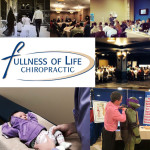Although surgery is a common and frequently effective treatment for back pain, there are some potential hazards that are connected with having the procedure done. Some potential dangers involved are postoperative infections, nerve or tissue damage, blood clots, and adverse reactions to the anesthetic. In addition, there is always the possibility of postoperative complications, such as an infection or a lag in the healing process, with any surgery.
It's possible that the length of time it takes to recuperate from back pain surgery depends on the specific procedure that was performed. In certain circumstances, patients may be required to remain hospitalized for anything from a few days to a few weeks as they recover from the treatment. In order to give your body the opportunity to recuperate and restore strength in the damaged area, it is typically necessary during this time for you to adhere to a rigorous bed rest regimen. Medications for the control of pain are almost certainly going to be prescribed at this time as well.
However, even in the event that the operation is carried out successfully, there is no assurance that the patient will no longer experience discomfort or that the symptoms of back pain will not surface again in the future. Scar tissue that forms as a result of surgical procedures can sometimes leave patients with lingering pain or other symptoms of discomfort. Furthermore, there are specific dangers associated with more difficult surgeries, like spinal fusion, which, in the event that something goes wrong, might lead to additional injuries as well as a long-term reduction in the patient's mobility.
Before deciding whether or not surgery is the correct choice for you, it is essential to give careful consideration to each of these possible downsides. Before beginning any kind of treatment, your primary care physician ought to have an in-depth conversation with you about the potential drawbacks and advantages of the proposed course of action. This will allow you to make an educated choice regarding your medical care.
Overview Of 7 Natural Strategies For Relieving Chronic Back Pain, Including Exercise, Physical Therapy, Massage, Acupuncture, And More
Exercise: Exercise is one of the most important strategies for reducing chronic back pain. Regular physical activity helps to increase flexibility, strength, and range of motion in the affected area while improving circulation throughout the body. Not only will exercise help reduce back pain, but it can also help improve overall health and well-being. Working with a physical therapist or another healthcare professional can help ensure that you’re doing exercises correctly and safely.
Physical Therapy: Physical therapists are specialized in helping individuals manage their chronic back pain through various treatments such as manual therapy (massage), postural education, stretching, strengthening exercises, posture correction with corrective equipment, hot/cold packs, ultrasound therapy, and electrical stimulation. In some cases, surgery may be recommended if physical therapy and other treatments are not enough to reduce the pain.
Massage Therapy: Massage therapy is a great way to reduce tension in the affected muscles of the back, neck, and shoulders. Regular massage can help improve circulation, decrease muscle spasms, improve range of motion, and realign your posture so that you experience less pain.
Acupuncture: Acupuncture is an ancient Chinese practice that has been used for centuries to relieve pain. It involves inserting very fine needles into specific points on the body which work to increase blood flow, reduce inflammation and stimulate healing. Research suggests that acupuncture may provide some relief from chronic low back pain when used in combination with traditional therapies.
Chiropractic Care: Chiropractic care is a safe, non-invasive method of treating chronic back pain. It involves the use of manual manipulation to realign the spine and restore optimal posture to reduce pressure on the nerves and surrounding muscles. In addition, chiropractic care can help improve circulation in the affected area, decrease inflammation, and relieve muscle tension.
Cognitive Behavioral Therapy (CBT): CBT is an evidence-based form of psychotherapy that helps individuals manage their chronic back pain by exploring how thoughts, emotions, behavior patterns, and external stressors may be contributing to their condition. Through cognitive reframing techniques and mindfulness practices, individuals are better able to cope with their symptoms while also working towards improved overall health.
Discussion Of How To Create A Personalized Pain Management Plan That Incorporates Multiple Strategies For Maximum Effectiveness
When creating a personalized pain management plan, it is important to consider the various strategies available in order to create an effective and comprehensive approach. Some common methods of managing chronic pain include medication, physical therapy, complementary/alternative therapies, lifestyle changes, and psychological support.
Medication can be used as a short-term solution for acute pain or as part of a long-term strategy for managing chronic pain. Commonly prescribed medications include nonsteroidal anti-inflammatory drugs (NSAIDs), opioids, anticonvulsants, muscle relaxants, antidepressants, and topical creams/ointments. It is important to discuss any potential side effects with your doctor prior to taking any medication.
Physical therapy may also be an important part of a personalized pain management plan. Physical therapists are trained to create exercise and stretching programs tailored to the patient’s individual needs and abilities. Exercise can help strengthen muscles that support the body and improve posture, reducing strain on painful areas. Additionally, physical therapy may incorporate techniques such as massage or heat/cold applications to reduce discomfort.
Complementary/alternative therapies have also been beneficial for managing chronic pain. Examples include acupuncture, yoga, tai chi, biofeedback, hypnosis, aromatherapy, and chiropractic care. These types of therapies are often used in combination with other treatments in order to maximize effectiveness and provide relief from symptoms.
Discussion Of How To Incorporate Mind-body Techniques Into Your Daily Routine For Maximum Benefit
Mind-body techniques are an important component of a comprehensive chronic pain management plan. These techniques help to reduce stress and promote relaxation, both of which can be beneficial for managing pain. Examples of mind-body techniques include meditation, yoga, breathing exercises, guided imagery, and progressive muscle relaxation.
Incorporating these techniques into your daily routine can help to reduce the impact of stress on your overall health and well-being. Taking even just a few minutes each day to practice deep breathing or guided imagery can go a long way toward reducing tension in the body and improving overall mental clarity. Additionally, incorporating yoga or tai chi into your physical activity regimen is a great way to increase flexibility while also promoting mindfulness and well-being.
Keep Your Spine Healthy and Strong
The Fullness of Life Chiropractic can help maintain the health of your spine by providing personalized treatments that address the root cause of your chronic back pain. Our team is experienced in a variety of different therapies and techniques, such as spinal manipulation and manual therapy, to improve mobility and reduce inflammation. We also teach our clients how to properly perform exercises that can be done at home to strengthen their core muscles and support their spine.
Making healthy lifestyle changes is also an important part of managing chronic back pain. Eating nutritious foods, getting regular exercise, maintaining proper posture while sitting or standing, limiting alcohol consumption, quitting smoking if necessary, and engaging in stress-relieving activities like meditation all play an important role in keeping your spine healthy and strong.





